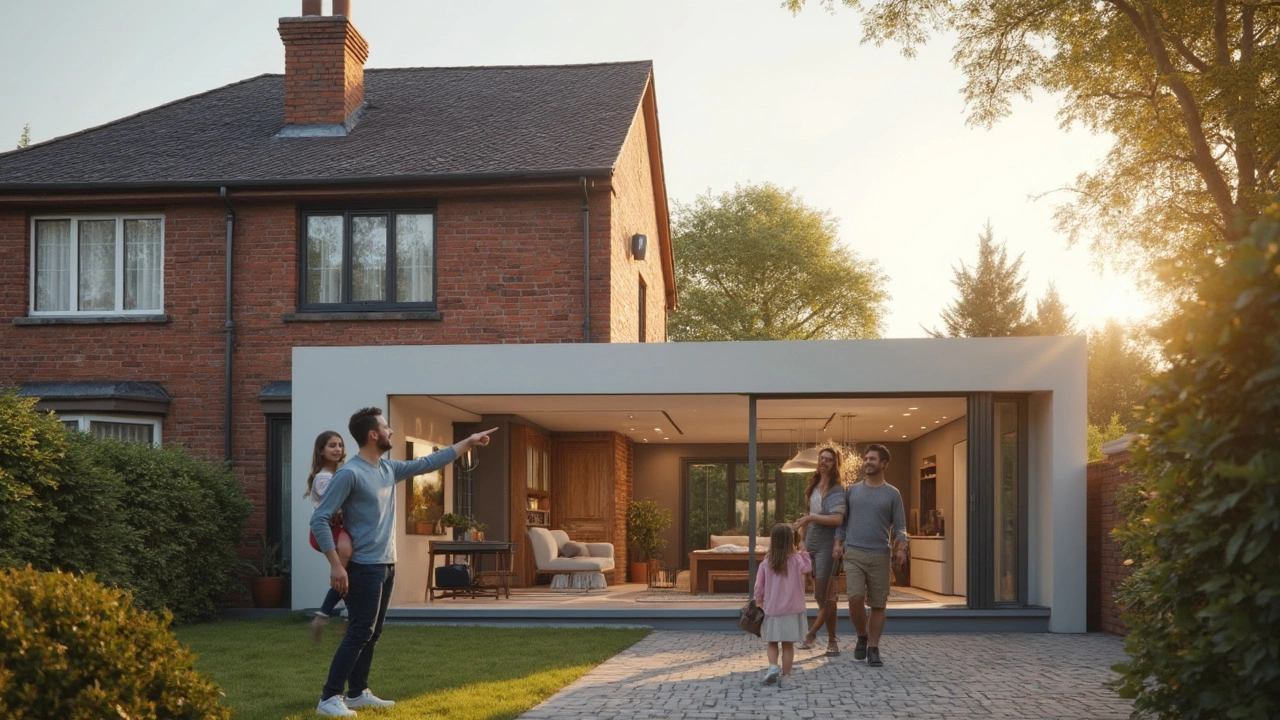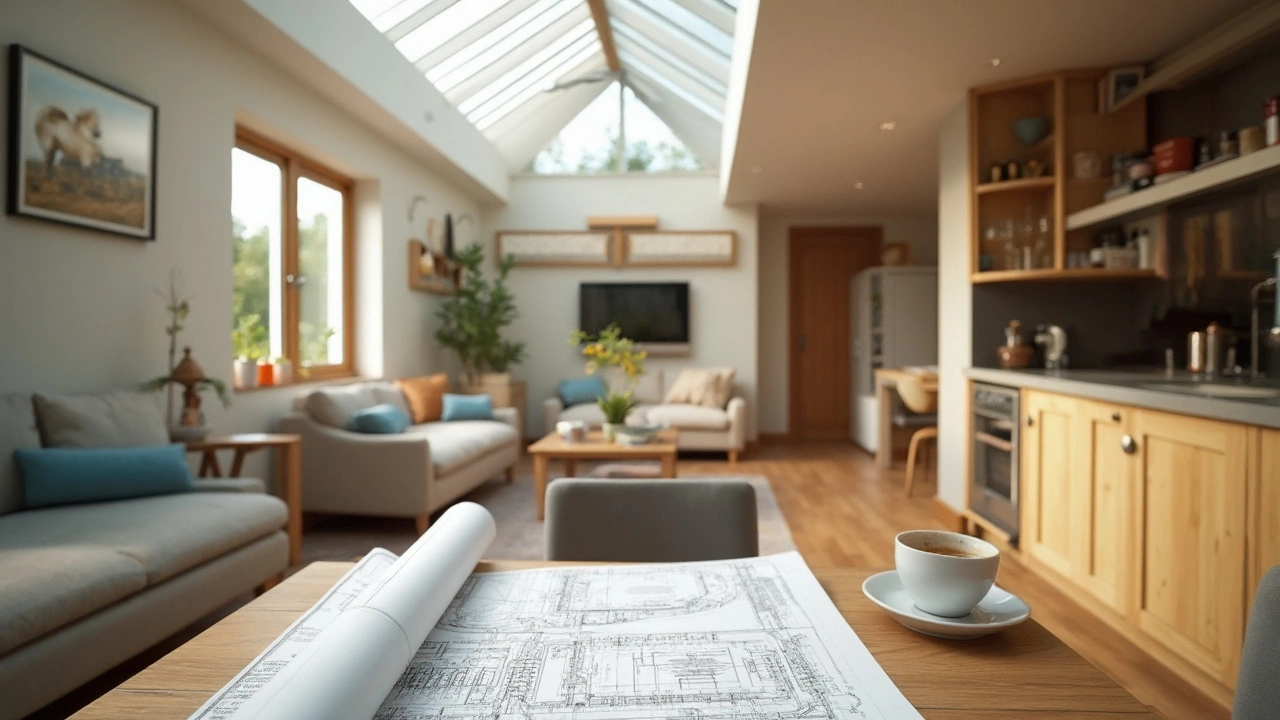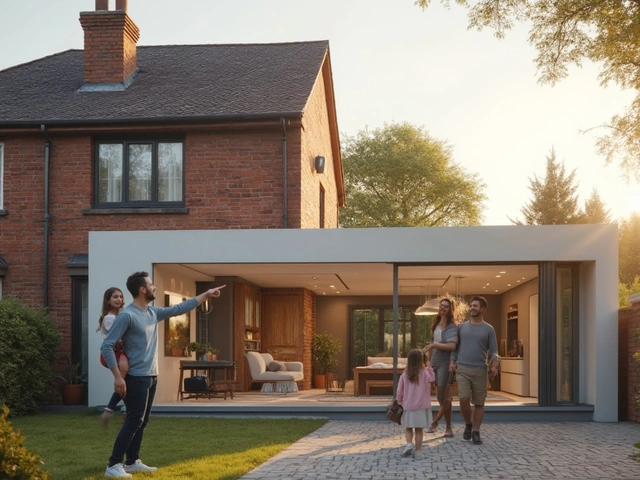How Much Does It Cost to Add 1000 Square Feet to a House? Real Numbers and Smart Storage Ideas

If you’re eyeing that extra 1000 square feet for your house, brace yourself—the costs aren’t one-size-fits-all. On average, you’re looking at anywhere from $110,000 to $340,000, depending on where you live, the type of addition, and your finish choices. In cities like Austin or Phoenix right now in 2025, permits alone can eat up nearly $8,000 before the first nail gets hammered in.
People forget about the domino effect: more space means more electrical wiring, HVAC work, plumbing (if you’re adding a bathroom), and a ton of extra permits. Simple stuff like bumping out a family room runs cheaper than building over a garage or adding a new second story—it can be twice as much for the same square footage if it’s going up instead of out.
Then there’s the hidden gold mine: storage. If you’re adding all this space, you want it to earn its keep. Built-in shelving, under-stair drawers, wall beds with storage—the right choices mean you don’t end up with clutter swallowing your shiny new square footage. Custom storage can cost a bit upfront, but it usually pays off in resale and day-to-day sanity.
- Real Costs for Adding 1000 Square Feet in 2025
- Why Prices Change: The Factors Nobody Tells You
- Smart Storage Solutions to Squeeze Every Inch
- Ways to Save Money Without Regret
Real Costs for Adding 1000 Square Feet in 2025
If you’re thinking about a home addition cost for 1000 square feet, you’ll want some actual numbers. In 2025, the average cost per square foot in the U.S. is around $140 to $350. But these aren’t made-up numbers—contractors and local builders have bumped up prices to cover labor shortages and material hikes that refuse to settle down after the past few years.
Here’s a quick breakdown of what 1000 square feet might cost in different scenarios:
- Basic room addition (unfinished): $110,000 to $180,000
- Mid-range (family/living spaces, basic finishes): $180,000 to $240,000
- High-end (kitchen, bathroom, top finishes): $240,000 to $340,000
Cost varies depending on what you’re adding. A simple sunroom or bonus room is cheaper than a kitchen or extra bathroom, because plumbing and extra electrical work drive up costs fast. Also, if you’re in California or New York, prices tilt toward the high end of the scale no matter what—sometimes $350 per square foot is just the starting point.
| Type of Addition | Low-End Cost | High-End Cost |
|---|---|---|
| Bump-out/Bedroom | $110,000 | $180,000 |
| Kitchen/Multiple Bathrooms | $220,000 | $340,000 |
| Second Story | $200,000 | $350,000 |
Don’t forget about permit and planning fees. In cities like Seattle or Boston, just getting city approval and basic plans might cost $10,000 or more, and that’s before any building starts. Always ask your builder for an itemized estimate so you don’t get slammed with surprise charges for utility upgrades or demolition.
If you want an accurate quote, have a clear idea of what the space will be: Are you dreaming of a fancy master suite or just an extra family room? The first is way pricier. With a 1000 sq ft addition, costs really depend on your wish list and local code requirements.
Why Prices Change: The Factors Nobody Tells You
Here’s where your wallet can really take a beating if you don’t know what you’re up against. The price to add 1000 square feet swings wildly based on way more than just lumber or labor. Think your friend’s addition was a steal? You’re probably comparing apples and oranges.
- Location: Adding 1000 square feet in Los Angeles costs a lot more than in Cleveland. Labor is pricier, city fees pile up, and even insurance jumps. In hot markets like San Francisco and NYC, you might pay double what you’d pay in the Midwest.
- Type of Addition: Adding out (first floor, side bump-out) is cheaper than building up (adding a second story). Second stories usually need structural beef-ups—think new supports and foundation work.
- Permits and Codes: Cities keep tightening building codes. In 2025, California added more energy rules, so you’re paying extra for eco-compliance. Some areas require sprinkler systems, accessible entryways, or “green” materials.
- Utilities: Want a bathroom? Major plumbing costs. Tying into your current electrical or heating can become an engineering nightmare if your old system isn’t up for the load—or the code’s changed since your house was built.
- Materials & Labor Shortages: Remember the lumber spike in 2021? It happened again in some regions this year. If there’s a supply chain hiccup, drywall might suddenly be gold-plated (price-wise, anyway).
- Quality and Finish Choices: It’s not just marble counters or high-end flooring. Even simple things like custom storage or higher grade insulation push prices up quick.
| Region | Typical Cost Per Sq Ft ($) | Required Permits/Fees ($) |
|---|---|---|
| California | 220-340 | 8,000 - 15,000 |
| Texas | 130-190 | 4,000 - 10,000 |
| Midwest | 110-170 | 3,000 - 7,000 |
One last thing: don’t trust averages at face value. Three houses on the same block can have totally different costs for the same home addition thanks to setbacks, weird lot shapes, or even what’s buried underground. You never know what you’ll hit until the digger shows up.

Smart Storage Solutions to Squeeze Every Inch
When people talk about a big home addition cost, they rarely think about what happens after the walls go up. But here’s the thing—how you handle storage in those extra 1000 square feet makes all the difference between living roomy or living cluttered.
Let’s get practical. Built-in storage should be your best friend. Floor-to-ceiling cabinets in living rooms or hallways almost double the useable space compared to regular freestanding shelves. Mudrooms with wall-mounted cubbies and benches keep shoes, bags, and coats off the floor—they’re a game changer for families.
- Custom closet systems: These aren’t just for walk-in closets. Try them in bedrooms, laundry rooms, or guest rooms. According to surveys by the National Association of Realtors, custom closets boost home value and keep buyers interested longer.
- Under-stair pull-outs: That empty triangle under the stairs? It’s a perfect spot for drawers or a mini pantry—in real homes, homeowners have squeezed in up to 15 extra cubic feet of storage there.
- Garage storage walls: For folks adding onto the back of the house or the garage itself, slatwalls or ceiling storage racks keep holiday gear, bikes, and tools in easy reach but off the ground. No more tripping over stuff just to get to the car.
- Multipurpose furniture: Wall beds with shelves, storage benches, or ottomans with hidden compartments work great in new additions that double as guest rooms or home offices.
Here’s a quick comparison of storage upgrade costs (2025 averages):
| Solution | Average Cost |
|---|---|
| Built-in shelving (per linear foot) | $350 |
| Custom closet system | $2,300 |
| Under-stair storage | $1,400 |
| Garage wall system | $1,000 |
Planning is everything. Sketch out your storage ideas before construction starts—moving walls to add a little more depth in closets or nooks costs way less than ripping them out and starting over later. Every inch you carve out now saves you headaches for years to come.
Ways to Save Money Without Regret
When it comes to a home addition cost project, you don't have to go broke to get the space you want. Even with prices higher in 2025, there are ways to keep numbers in check without ending up with a cheap-looking add-on.
The first rule: plan ahead, really ahead. Changing your mind once the walls start going up is where budgets blow up fast. Nail down your layout, finishes, and most of the fixtures before you talk to a contractor. This way, you avoid "change orders," which are just a fancy way of saying 'Yeah, that's going to cost extra.'
- Build out, not up. Expanding outward is almost always cheaper than adding a second story. A simple ground-level addition skips all the extra foundation work and complicated roof changes.
- Go with standard sizes. Custom windows, odd-shaped doors, and unique layouts look cool but can cost a fortune. Stick to builder-grade sizes and watch your total drop.
- Leave the plumbing where it is. Bathrooms and kitchens are the most expensive rooms to move. If you can, keep these spaces in line with your existing utilities.
- DIY the easy stuff. Painting, installing shelves, or landscaping are doable for most folks. Pay the pros for structural stuff and save on the finishing touches.
Also, don't ignore timing. Contractors are swamped in spring and summer, which drives up labor prices. If you schedule work for fall or winter, you might get better rates. According to HomeAdvisor, hourly labor rates in off-peak months can drop by up to 15%.
| Cost-Saving Move | Average Savings (%) |
|---|---|
| Build Out, Not Up | 10-30% |
| Standard Sizes/Materials | 5-15% |
| DIY Finishes | 3-10% |
| Seasonal Scheduling | Up to 15% |
Another biggie: ask for detailed bids. Break out the costs line-by-line. This makes it way easier to spot stuff you can do yourself or downgrade without tanking the whole project. Finally, don’t skip on storage solutions during your 1000 sq ft addition. Well-planned built-ins or modular shelving don’t just look good—they save square footage by using space smartly, which is a huge win when every square foot costs you money to create.
